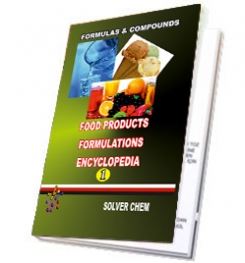FOOD G L Y C O L S
Dipropylene Glycol
Propylene Glycol (MPG)

Propylene glycol (USP grade) is employed as a humectant,preservative, solvent and lubricant by the food processing and tobacco industries. Propylene glycol is employed as a hygroscopic agent for tobacco. It is used as a humectant in baked goods and shredded coconut to maintain freshness, and is added to cereals to improve friability and firmness.Use in:serves as a solvent connects and stabilises insoluble fluids (emulsifier) helps to bind and transport other substances (excipient) holds and dissolves active ingredients equally in a medium attracts/holds water/moisture (hygroscopic) reduces the freezing point increases the boiling point offers outstanding stability with high flash and boiling points The propylene glycol molecule is chemically neutral, i.e. it usually does not react with other substances. This is a particularly helpful property when seeking to combine contrasting chemical elements, for example in a perfume, to create a single, homogeneous fluid.
By emulsifying the active ingredients, which otherwise would not mix, the propylene glycol creates a stable homogeneous fluid that will allow the intended final product, be it a face cream or shampoo, for example, to do its job.
Because of its mutual solvent properties, both aromatic chemicals and essential oils can be dissolved in propylene glycol and then diluted with water. Propylene glycol is used to extract flavor from natural flavoring materials. In soft drinks, it is employed as a syrup flavor solvent and imparts smoothness, body and sparkle to the final product.
Propylene glycol can be used to lubricate food packaging machinery; ordinary lubricants are prohibited because of their toxic effects. Some types of food products, such as dates, can be prevented from sticking to process machinery by washing them with solutions of propylene glycol.

• Cosmetics and Pharmaceuticals: In cosmetic and pharmaceutical formulations, propylene glycol (USP grade) acts as a softening agent, ointment base, preservative, humectant and emollient.
Propylene glycol is a component of many cosmetic ingredients. Many grease-like materials can be presented in attractive form through the proper use of this product. Propylene glycol assists in the formation of oil-in-water emulsions. It couples lanolin, oil and soap into water in cold creams and cleansing creams, helps to overcome flaking and rolling in vanishing creams, and generally prolongs the shelf life of most cosmetic formulations. It is also an excellent solvent for dyes and most perfumes,allowing the dispersion of these materials throughout the preparation.
Addition of propylene glycol to hand lotions ensures complete and rapid absorption of the protective ingredients by the skin. Propylene glycol is also used in toothpastes and shaving creams to maintain the proper degree of moisture content. Many cosmetic formulations using lemon or other natural fruit juices contain propylene glycol as an inhibitor of mold growth.
Propylene glycol is often employed in the formulation of biological elixirs, antiseptics, salves and ointments. It is a solvent for many organic chemicals used for medicinal purposes and for some water-soluble vitamins. As a drug vehicle, propylene glycol acts as an antioxidant and stabilizer.
• Polyester Resins: Propylene glycol reacts with maleic, fumaric or similar dibasic acids to form polyester. These polyesters, when cross-linked with a vinyl-type monomer such as styrene, form resins which are useful for low pressure laminating.
Polyesters of propylene glycol and dibasic acids such as phthalic, adipic and sebacic are used as plasticizers, primarily in vinyl compounding. These plasticizers are resistant to migration and extraction by gasoline, oil and water.
• Urethanes: Polyesters containing propylene glycol and adipic acid are intermediates, together with isocyanates, in the manufacture of both flexible and rigid urethane foams. Propylene glycol is also an intermediate in the syntheses of urethane elastomers.
• Plasticizers: Propylene glycol is a nontoxic plasticizer and humectant, widely used in cellophane film. It is also used as a plasticizer in phenolic resins. As a component of dry adhesive formulations,propylene glycol acts as a plasticizer and humectant to maintain a constant moisture content and to help the adhesive to wet out quickly at the time of use. Propylene glycol is also used as a conditioning agent for the cork linings in bottle caps.
• Inks: Propylene glycol's high boiling point, dye solvency and strong penetrating properties make it an ideal ingredient for the formulation of high speed steam-set inks. The nontoxic properties of propylene glycol are important when formulating ink for printing cloth, paper and plastic film food wrappers.
RELATED TAGS : Dipropylene glycol, monopropylene glycol, usage of dipropylene glycol, properties of monopropylene glycol, What is food flavors materials in foods, food flavoring in food properties, how to use food flavoring in food, where to use food flavoring, food ingredients, food chemicals, food materials, how much use food ingredients, food categories, food flavoring, food colorings. where to use acid regulators, why to use food flavors, properties of food flavors in food products, usage of aromatics, formulations of food products.

FOOD PRODUCTS FORMULATIONS ENCYCLOPEDIA contains formulations and production process of following products that are natural ice cream formulations, fruit flavored ice cream preparation,composition of diet ice cream making, ice cream coatings compounds, natural ice lollies, instant fruit juice powder manufacturing process, fruit juice concentrations, fruit nectar making, formulations of flavored fruit juices, fruit flavored soda, diet and light fruit soda, chewing gum formulations, sugar free diet chewing gum production process, chewing gum flavored coating preparation, halvah and turkish delights compositions, sugar candy compounds,sugar hard candy types, nuts coatings, almonds coatings preparations, meat bouillions formulas, chicken bouillions manufacturing process, vegetable bouillons compositions, fish bouillon making, meat sausage preparation, chicken sausages, meat burger making, chicken burger preparations and etc.
|
|
|
|
|
|
|
|
|
